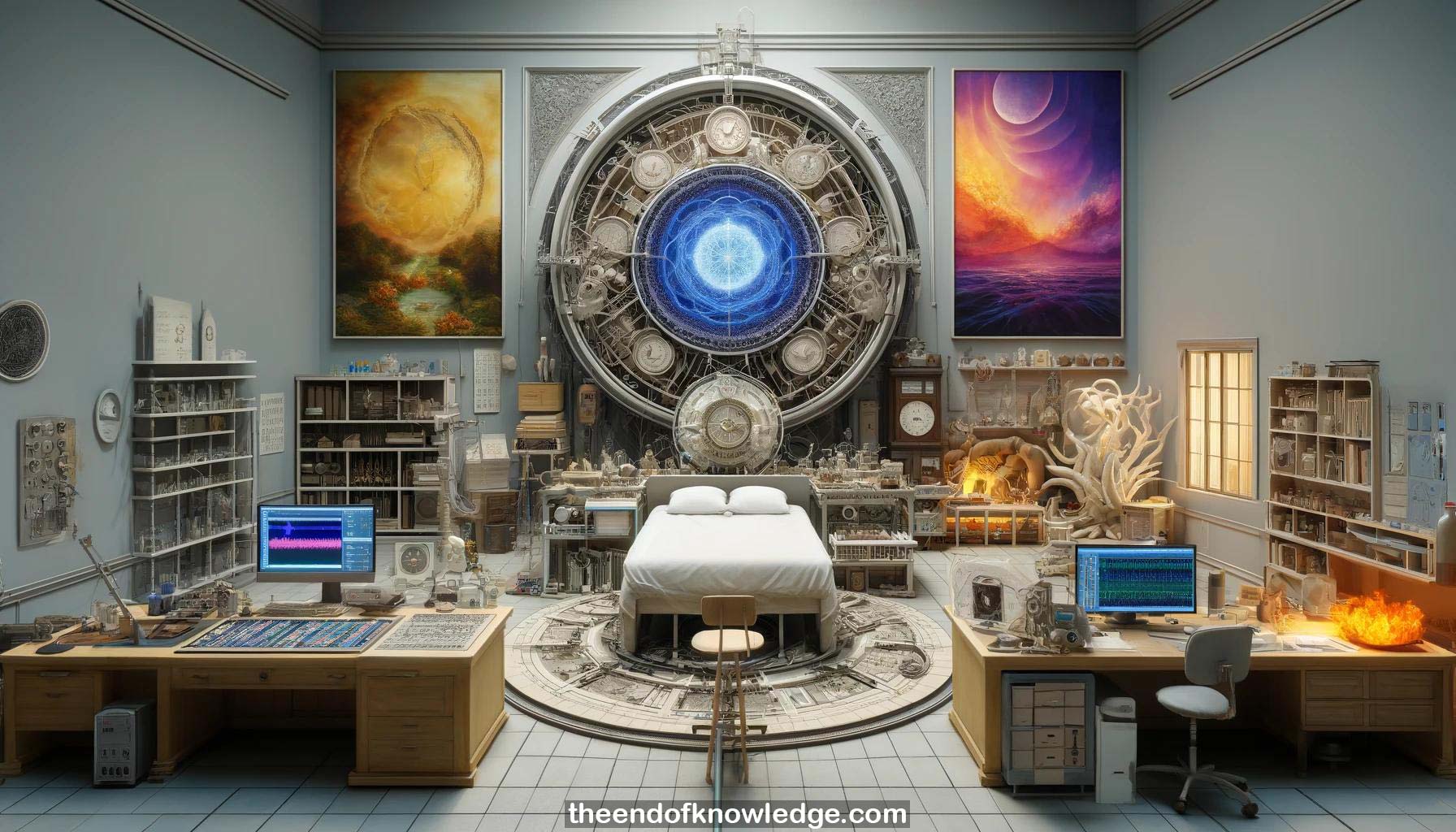 >
>
Concept Graph & Resume using Claude 3 Opus | Chat GPT4 | Llama 3:
Resume:
1.- Sleep is divided into stages and cycles based on Registrar van Kael's 1968 paper using healthy volunteers. Why we sleep remains unanswered.
2.- Non-REM sleep is divided into stages 1-4 (from light to deep sleep). REM sleep has sympathetic overdrive. 4-5 cycles occur per night.
3.- In 2024, the only major sleep scoring change is combining N3 and N4 into one deep sleep stage (N3). Scoring agreement is ~70-80%.
4.- Samu Kainulainen is a sleep researcher at University of Eastern Finland and Kuopio University Hospital. His group was established in 2017.
5.- Limitations in sleep staging include using fixed 30-second intervals, the majority rule, losing interactions, and neglecting micro-features. More tools are needed.
6.- Sleep disrupts the scoring process. Severe OSA makes distinguishing sleep stages hard. Manual scoring takes 1-5 hours depending on the case.
7.- AI sleep staging tools match human accuracy. N1 is problematic to score. Combining N1 and N2 into light sleep is being discussed.
8.- Explainable AI highlights uncertain areas for human review, saving time. The system is being trialed in Samu's lab to set scoring thresholds.
9.- PPG signals can be used to classify sleep stages, though not as accurately as EEG. 3-stage (wake, NREM, REM) classification works well.
10.- Changes in autonomous nervous system activity are not synchronized with EEG sleep stages. PPG and EEG may quantify different phenomena.
11.- Severe sleep apnea decreases human scorer agreement on sleep stages, arousals, and respiratory events. AI accuracy also decreases due to uncertain training data.
12.- OSA decreases N3 and fragments REM. Literature is lacking on spatial EEG information and physiological interactions in OSA. More research is needed.
13.- Insomnia types include onset, maintenance, and paradoxical. PSG may show good sleep while the patient feels they barely slept. Brain region differences may explain this.
14.- Objective and subjective sleep quality often don't match. Combining them may help explain links between sleep disorders, psychiatric disorders, and neurological diseases.
15.- Going beyond EEG sleep analysis means transforming it to wearables, diving into biosignal properties and interactions, and incorporating subjective sleep experience.
16.- Automatic sleep staging is needed to reduce sleep clinic workload. PPG-based methods enable staging for home sleep tests lacking EEG.
17.- Phasic vs tonic REM distinction and links to outcomes like dementia risk is an area for further research involving human physiology experts.
18.- Coma differs from sleep - coma EEGs are flat without oscillations, making sleep staging impossible. Sleep is a more dynamic process.
19.- The body and brain likely interact during sleep in ways we can't yet measure well. Deeper brain regions may drive cortical EEG changes.
20.- It takes most people at least two nights to adapt to sleeping with a full PSG setup. Single-night PSGs have limitations.
21.- One reason we need sleep is for growth and development, but human sleep patterns differ from other mammals in still unexplained ways.
22.- 6+ hours of sleep per night is needed for most people. Chronically sleeping less is likely detrimental even if someone feels okay.
23.- The current sleep stage classification system is expected to improve substantially in the future as research advances.
Knowledge Vault built byDavid Vivancos 2024